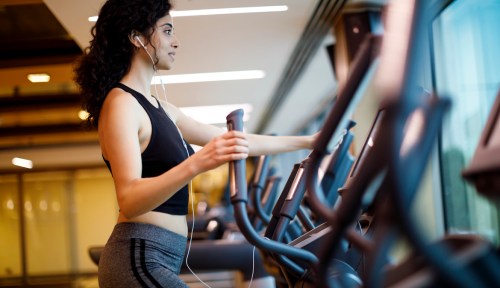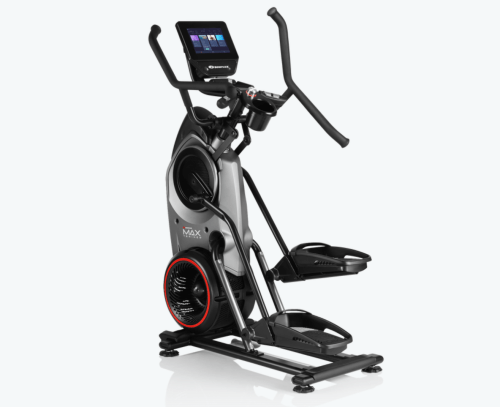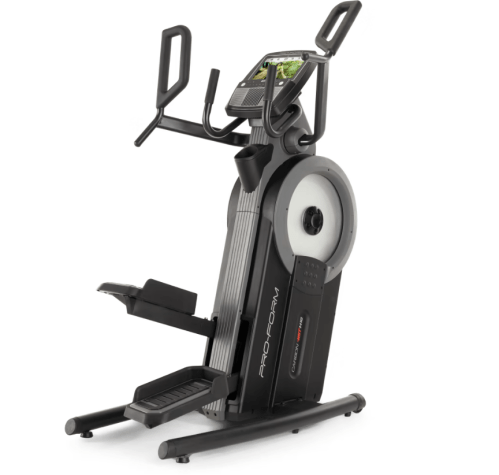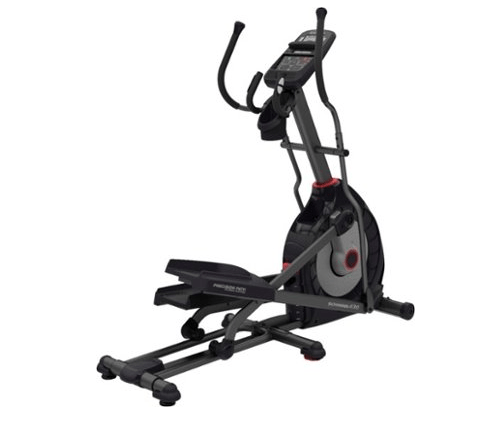Our editors independently select these products. Making a purchase through our links may earn Well+Good a commission
Is the Elliptical Out of Style? Here’s What Happened to the ’90s Cardio Craze
Once a cardio favorite in the 1990s, the elliptical machine popularity might seem to have faded—but the machine is still a go-to.

When the elliptical machine first hit the fitness scene in the 1990s, it was all the rage. But over the last few years, more attention has gone to flashier, higher-tech options with touch-screens and built-in instructions (think: Mirror and Tonal). And at-home fitness pioneers like Peloton have bypassed the elliptical entirely in favor of the bike, treadmill, and rower.
Experts in This Article
But are ellipticals actually less popular than they once were, or are they just getting less PR?
The short answer is no, elliptical users have not jumped ship. Elliptical machines are in as high demand as they have ever been, according to certified personal trainer Chris Freytag, founder of GetHealthyUTV.com and former manager of a Minnesota-based gym. “There are as many people using the elliptical at the gym as there are people using the treadmill,” she says, noting that the two machines are tied for gold.
The data on gym equipment sales echoes these sentiments. In 2020, treadmills were the only gym purchase that earned more money than ellipticals, raking in $1.535 billion compared to ellipticals’ $927 million. In comparison, exercise bikes and rowing machines brought in $789 million and $135.4 million, respectively. Further, in 2021, wholesale elliptical sales brought in $969 million, the highest number since 2007, suggesting the machine is not going anywhere anytime soon.
Yes, there are benefits of using the elliptical
Why are people still using the elliptical? Simply put, it can help us effectively and safely achieve our fitness goals.
Given that it’s a cardio machine, it should come as no surprise that the elliptical’s main claim to fame is that it ramps up your heart rate. “Using the elliptical can improve your cardiorespiratory health, which is the health of your heart, lungs, and blood vessels,” says exercise physiologist and certified strength and conditioning coach Sharon Gam, PhD, CSCS. “Over time, this can help protect against chronic disease and support a long and healthy life,” she says.
The elliptical can also be used to build muscular endurance—the capacity for your muscles to keep working over a long period of time—in lower body muscles like the glutes, hamstrings, quads, calves, says Gam. If your elliptical machine has handles (and you use them!), it can also build strength throughout your back, shoulders, biceps, triceps, and grip muscles. Improving muscular endurance on the machine prolongs your stamina during day-to-day activities and adventures, she says.
Okay, so how does the elliptical compare to other cardio machines?
Most of the other machines in the cardio room (treadmill, stairmaster, stationary bike, etc) will get your heart rate up and can work similar muscles to the ones the elliptical works, says Gam. “So really, which you use should come down to personal preference and what feels best for your particular body,” she says. After all, staying healthy and fit throughout your life is about finding a routine that you can stick with.
That said, the elliptical is generally a better option for people with pre-existing knee, hip, or ankle injuries, according to Freytag. “The elliptical is gentle on your joints,” she says. There is no pounding or jumping associated with each stroke or stride, as there is with the treadmill, ski erg, or stairmaster.
But to be clear: While the elliptical is lower impact compared to other machines, that does not mean it is necessarily lower intensity. You can still go hard on the machine, and use the incline, decline, and resistance functions to get in a serious sweat, says Freytag.
While form is important across cardio machines, ellipticals are generally easier to master compared to a machine like the rower or ski erg, according to Freytag. Indeed, ellipticals are even easier to use than stationary bikes, which require users to understand which seat and handlebar height is safest for their individual height and limb dimensions, she says. This means ellipticals tend to be a better option for someone who is new to machines, and for people who will be using their machines at home without the supervision of a fitness professional.
Finally, the elliptical is also a good option for anyone who might be… *technologically challenged*. While there are higher tech elliptical options on the market, they tend to be an easier machine to operate compared to something like the Mirror or Peloton, which often require a moderate knowledge of touch screens.
The bottom line on ellipticals
These babies are not only as popular now as they were three decades ago—market sales show they’re more popular. As Freytag puts it, “Ellipticals are a worthy piece of cardiovascular equipment that have proven themselves time and time again.”
So, if your fitness routine needs a little zhuzhing up, or you’re looking for a kind-to-your-joints, easy-to-use, cardio-building addition to your exercise routine, consider hopping on an elliptical. It may not be the buzziest machine on the gym floor, but it’s a tried-and-true standby that’s not going anywhere.
Want to add an elliptical to your home gym? Here are 3 options:

Bowflex Max Trainer M9 — $1,699.00
Originally $1999, currently on sale for $1699, or $95/month
The interactive console requires a membership, but it will keep your pedal sessions spicy. Every purchase comes with a one-year free trial.

ProForm Carbon HIIT H10 — $1,403.00
Or $39/month
This elliptical comes with thousands of studio classes where the equipment automatically adjusts for you, changing the resistance as you go.

Schwinn 430 Elliptical — $800.00
Originally $900, currently on sale for $800
If you’re just looking for the basics (at a lower cost), this model doesn’t have interactive classes, but it is a beginner-friendly option.
Sign up for the Well+Good SHOP Newsletter
Get exclusive deals on wellness, beauty, fitness, and food products that have been hand-picked by our editors.
Got it, you've been added to our email list.









